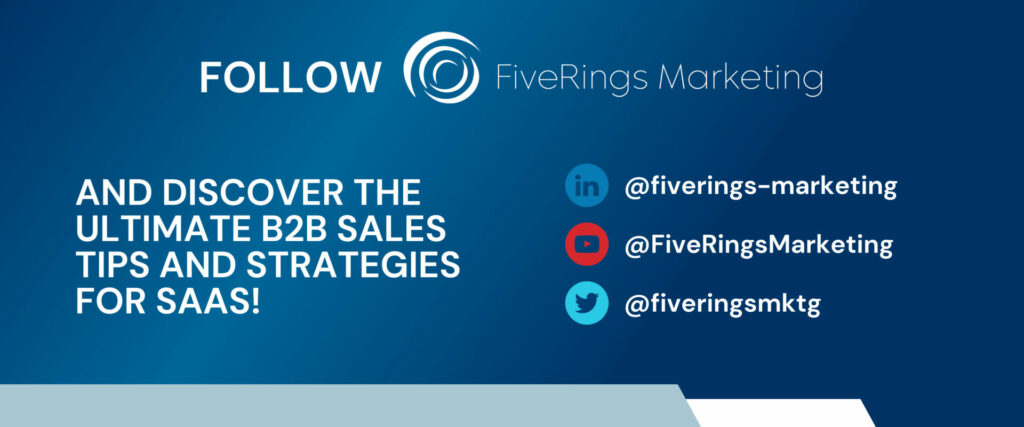- Last updated on April 22, 2024
Are you currently looking for investors to help you scale your tech or SaaS business?
If that’s the case, then you are in the right place.
Nowadays, entrepreneurs and business owners have many ways to get visibility, network and connect with the right investors.
There are different ways on how to get investors for your business, such as online crowdfunding, business events, accelerator programs and social media, among others.
We all understand that funding is an essential part of any business that wants to grow to its full potential, and for this we have an unconventional but effective approach to getting funding from investors.
First, let me answer one simple question:
How do you get investors for your business? – Sales.
Many founders underestimate the power of sales. Sales teams are the connection between customers and the products and services a company offers. A business without sales isn’t a business…it’s a hobby or a non-profit.
There are many companies out there that lack a repeatable, scalable and effective sales process.
With no scalable sales process, businesses tend to have a hard time tracking their progress, decisions are made with inaccurate data, and they have a difficult time growing their margins and profits. All of these scenarios scare investors away.
Luckily, here is a five-step formula you can use to help you get meetings with investors:

Step 1: Identify your ideal investor
The first step to identifying your ideal investor is to determine which stage your company is at. This means, will your company need early stage investing? Pre-seed? Series A? Or perhaps late stage investing?
Once you determine that, you need to identify the type of investor you want for your company.
It is important to define this as different types of investors have different offerings that ultimately affect your company’s course of action.
For example, angel investors tend to focus on investing in the entrepreneur and not really on how viable the company is during its initial stages.
On the other hand, venture capitalists tend to put their money on businesses they believe have a long-term growth potential and consequently demand their portion of the cake.
You might also want to consider family offices, which are increasingly focusing on investing in startups.

The last thing to consider is the kind of industry these investors are investing in.
If you own a health tech company, do you only want to have in your business health tech investors? Or if you own an ed tech company, do you want to attract only ed tech investors?
To learn more about identifying your ideal investors, check out Eqvista’s article.
Step 2: Build lead list on LinkedIn Sales Navigator
LinkedIn offers an amazing intelligence platform called Sales Navigator which allows you to find the right prospects and build relationships with them.
It is commonly used by sales professionals but it can also be a helpful tool to connect with investors for your business.
According to an online survey conducted by Cogent Research, there are currently 5 million affluent investors that use social media to research financial decisions, the most popular one being LinkedIn.
The survey also showed the top 3 reasons why institutional investors use social media:
- 48% to read news/market/industry updates
- 47% to research a specific industry
- 44% to seek opinions or comments on markets/events

When using Sales Navigator to build lead lists, there are two ways to save potential investors on your lists.
You can save a lead to your custom list directly from their profile page, which can be time consuming, or you can also save your leads directly from the search results.
Your search results will be determined by the filters you decide to use, for which it’s important to have a plan that will guide you into keeping your information organized and prioritizing your leads.
You may want to divide your searches and leads into categories such as geographic location or industry to get started.
If you want to learn more about how to build and manage lead lists on Sales Navigator, check out this LinkedIn article.
The whole purpose of saving these leads is to obtain valuable data and insights on the people that will help you grow and scale your business, such as the type of content they post on their LinkedIn profile, their interests, and any mention in the news, just to mention a few.
By knowing this, you may be able to determine if these leads are potential investors for your business and if they are the right fit as well.
Step 3: Create messaging sequence
You use a messaging sequence when you want to make sure that the receiver obtains your messages in a specific order. Having these pre-scripted messages also helps you save time.
In your LinkedIn connection message in particular, you must make sure of the following:
- State your value/value proposition
… which may look something like this:
Ex. Hi [first name], I’d like to speak with you about our ___ platform/solution/product that does _____ and ____ for _____ target market.
This value proposition should be stated in one sentence only. Remember that the connection message already includes a 300 character limit anyways.
So the more direct and creative your messaging is, the higher your chance of getting a positive response from your potential investors.
Tip: Focus on what investors care about when it comes to what your product does and for who – focus on revenue-generating benefits and a target market that’s big enough to sustain a high growth company.

Step 4: Soft follow-ups and asking to send a pitch deck
If you want to get the most out of your outreach efforts and the tools used, you need to do follow-ups. Just because you don’t get a response right away, that doesn’t mean the potential investor is not at all interested in being part of your business.
Most deals actually take between four to five follow-up messages on average to be closed.
Check out our recent article that discusses sales follow up facts and tips that can also be used when trying to attract and keep investors.
Soft follow-ups allow you to politely ask the investor if they have just looked over your previous message and at the same time highlight how important it is for you to go over your business plan with them and what the investor will obtain out of a possible investment with your company.
You can also use a follow-up message to ask them if it’s ok to send them your pitch deck. Make sure you have an informative and visually appealing pitch deck to get you to your next meeting with the potential investor.
Check out this Visme’s article to help you create an effective pitch deck for when you meet with investors.

Step 5: Tell YOUR story
In sales, you usually would want to keep messages short and sweet, but when it comes to getting investors for your business, you must take the time to draft a detailed and complete message that narrates YOUR story, from when it all started to where you are at now. Telling captivating and inspiring stories is the way to an investor’s heart (and money).
Besides the products or services your company offers in the market, they want to get to know you as a person, your life journey and the obstacles you’ve had to overcome to be where you are.
As humans, we love to hear stories of change and overcoming obstacles because they highlight how hard work and effort is required to do something good for your community.
No matter if you are inspiring change through your billing software or your IT consulting service, investors at the end of the day decide to invest in you as a person, and not just in your company.
If you need any help, read this great article on “How to Tell Your Company’s Story”.
Once you have completed these five steps above, all you need to do is the following:
- Connect your LinkedIn account into a LinkedIn automation tool (ex. Salesflow, MeetAlfred, etc.)
- Load in your lead lists and messaging sequence
- Hit “launch”

How to Get Investors For Your Business Using Lead Generation Tactics
Knowing how to get investors for your business can be a challenging task. When looking for investors, you have to make sure that they deeply understand the product or service you are offering, share your values and strongly believe in your business and in you as an entrepreneur.
There are different types of investors you can look out for, depending on your long-term goals and available resources. Once you have identified the types of investors you want to attract to your company, using tools like LinkedIn Sales Navigator will help you have an effective process for getting in front of the right investors and book meetings with them.
Establishing this process within your company can be a bit difficult and time consuming. However, we are more than happy to chat with you and figure out a strategy that best fits your needs. Don’t hesitate to reach out.

Spread the word and share this post with your network!



